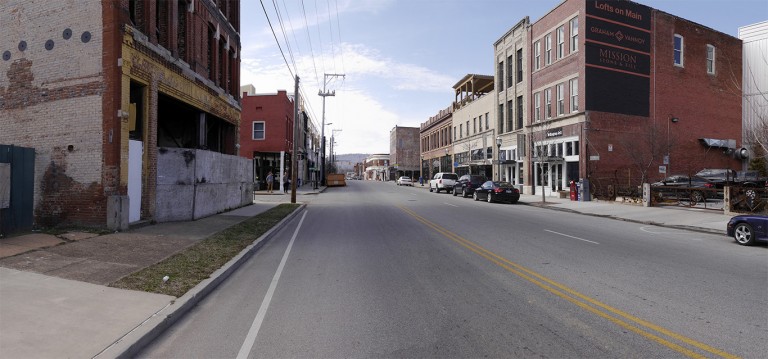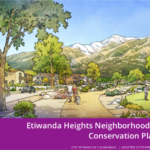A Small City with a Big Vision: Chattanooga’s New Form-Based Code

Chattanooga’s form-based code is part of an innovative vision for the city’s economic, environmental and cultural future. Following a recent visit to Chattanooga, Bruce Katz wrote in a Brookings Institute blog, “Something special is happening in Chattanooga.” As Katz points out, too often venture capitalists “pay too little attention to small and mid-sized cities with strong innovative assets.” To remedy this, Chattanooga has installed public one-gigabit-per-second fiber Internet service—in the words of Mayor Berke, “the fastest, cheapest, most pervasive internet in the Western Hemisphere.” In addition, the city has designated a quarter-mile radius Innovation District covering 140 acres of the downtown, where firms will benefit from walkable and bike-able proximity to each other, and where coffee shops will be places of serendipitous and deliberate creative encounters. The form-based code is a tool to ensure an urban form shaped for social interaction. The code is also intended to safeguard the beauty and accessibility of the city’s riverfront. In fact, the form-based code will regulate development for virtually the entire downtown.
Chattanooga’s downtown was facing an uncertain future: too many poorly located parking lots and wrong-sized buildings were undermining the downtown’s walkable character. The recent arrival of one-story, suburban-style, chain restaurants in the heart of the downtown signaled that something had to be done. The city leadership worried about a future of underinvestment—low-slung development instead of the dense walkable urbanism that signals a thriving economy. The downtown’s future was also bedeviled by anything-goes zones in the old zoning map that permitted virtually anything a developer wanted to do.
To bring more urban life and tourism to downtown, lure a young creative workforce and assure existing homeowners that new buildings wouldn’t overwhelm theirs, the city realized it needed to rethink its outdated zoning. Public meetings in recent years showed a willing public. Mayor Andy Berke’s Chattanooga Forward initiative convened a downtown task force that called for a form-based code. In 2015, the city embarked on a public process to draft a form-based code for five downtown neighborhoods. Three leadership players spearheaded the coding effort: the city, Chattanooga-Hamilton County Regional Planning Agency, and consulting firm Code Studio from Austin, Texas.

The process was kicked off with a weeklong public urban design charrette in March 2015 facilitated by Code Studio. (This author was there to provide illustration services for the week, and witnessed the city and consultants’ active engagement with the community.) Planning consultant Lee Einsweiler of Code Studio made clear in public lectures during the charrette that the final deliverable to the city would be a form-based code. Many cities think the subjects of zoning reform and form-based codes are too wonky to get much public support. But the city specifically wanted a consultant team willing to educate the public. Staff even asked prospective consultants to give a lecture on form-based codes as part of the interview process. During the charrette Einsweiler did not shy away from giving public lectures on what a form-based code is, does, and how it would benefit Chattanooga. News stories since have been direct about this new form of development regulation and how it will bode big changes for the walkable future of downtown. For those lecture-averse, Mayor Berke simplified the message: compared to conventional zoning, “form-based codes are people-centric.”
Code Studio wrote the design standards. The city staff created the zoning map that assigned the types to properties and streets. Although Code Studio feels that the code is a type of zoning and assigns street and building standards to “zones,” the zones are detailed and the standards are clearly written to ensure that buildings shape and enhance the public realm.

The code, profusely illustrated, will make it possible for most development proposals to be approved “by right” by staff at the planning desk, thus avoiding protracted review processes. Any development proposal that significantly deviates from the code will need to be reviewed by a nine-person Form-Based Code Committee appointed by the Mayor and approved by the City Council. Members will be drawn from local architects, landscape architects, urban designers, civil engineers, bankers, realtors, developers, residents, business owners, and property owners. After the code has been adopted and used for a year, the code calls for a mandatory review of how it’s working and how well the Form-Based Code Committee process is working.
Karen Hundt, director of the Community Design Group in the Chattanooga-Hamilton County Regional Planning Agency, says that local planning staff aggressively sought public input. “We’re known here for public participation.” Hundt is encouraged by the results. “A few property owners wanted changes. We deferred five properties out of 2,000.” Input from developers was actively sought and several changes made to the code as a consequence. “I think most developers are cautiously optimistic,” said Hundt. The process of drafting the code has inspired further discussion about increasing transit service to and in the downtown, including bus rapid transit.

Current streetview

As envisioned
Chattanooga’s code is part of a growing trend across the country to use form-based codes as part of a strategy to bring faltering downtowns back to life. For Hundt, Chattanooga’s adoption of a form-based code “is a big deal.” Colin Scarff of Code Studio agrees: “It’s a giant leap forward for Chattanooga.”
Stories about Chattanooga’s form-based code in the local press:
Zoning law changes could alter look and feel of downtown Chattanooga
People-friendly zoning: New codes could change the face of Chattanooga















I actually adore your post. I read your site fairly frequently and you are constantly coming
out with some amazing stuff. I shared this on my FB and my followers merely loved it.
Keep up the good work!